Comprehensive Guide to Grow Tent and Grow Room Ventilation: Cost-effective and DIY Solutions
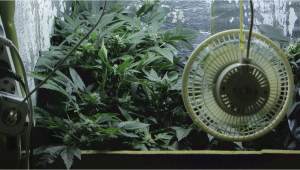
- 1. Introduction
- 2. Components of an effective ventilation system
- 2. a. Fan speed controllers
- 2. b. Thermostats and hygrostats
- 2. c. Monitoring equipment
- 2. d. Air exchange rate
- 2. e. Fan capacity and sizing
- 2. f. Filter and ducting considerations
- 2. g. Adjustments for environmental factors
- 3. Ventilation system installation and configuration
- 3. a. Grow tent ventilation setup
- 3. b. Adjusting for environmental factors
- 3. c. Maintaining negative pressure
- 4. Tips for optimizing ventilation
- 4. a. Sealing your grow space
- 4. b. Minimizing ducting length and bends
- 4. c. Proper fan and filter maintenance
- 4. d. Monitoring and adjusting temperature and humidity
- 5. Common ventilation issues and troubleshooting
- 5. a. Insufficient air exchange
- 5. b. Temperature and humidity imbalances
- 5. c. Odors escaping from grow space
- 6. Additional ventilation tips
- 6. a. Using co2 supplementation
- 6. b. Using air purifiers
- 6. c. Noise reduction
- 7. Maintaining ventilation equipment
- 7. a. Cleaning fans
- 7. b. Checking and replacing filters
- 7. c. Inspecting ducting
- 8. Optimizing grow space layout for ventilation
- 8. a. Plant spacing
- 8. b. Light placement
- 8. c. Ventilation equipment placement
- 9. Troubleshooting ventilation issues
- 9. a. High temperature
- 9. b. High humidity
- 9. c. Low humidity
- 9. d. Odor issues
- 10. Conclusion
Introduction
You got your seeds, your pot and everything else you might need to cultivate your best harvest yet, but before you get into it, you need to set up a good growing space for your cannabis. Good ventilation is the one thing that will make sure your plants grow healthy and productive. So, to give you all the right tools to create the best ventilation system in your growing space at an accessible price, here’s our complete guide. As a bonus, we’ll tell you how to deal with the most common issues in a ventilation system so you can grow the best cannabis seeds out there.
Components of an Effective Ventilation System
Fan Speed Controllers
Just like the name, fan speed controllers have the purpose to control the speed of the exhaust and intake fans so you don’t have harsh temperature and humidity fluctuations in your grow space. If you want to invest more, then you can also consider getting a fan speed controller with built-in thermostats or hygrostats. These devices will automatically adjust the speed based on the measurements from your room.
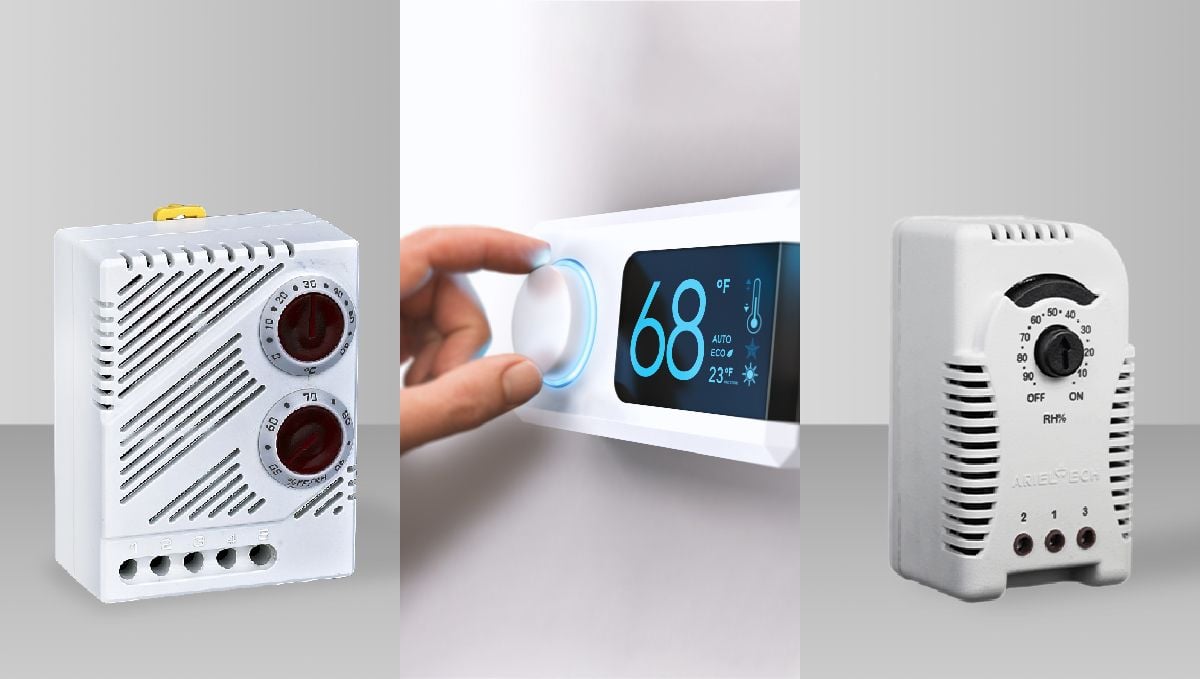
Thermostats and Hygrostats
Thermostats measure temperature and hygrostats measure the levels of humidity in your growing room. These devices are important to create an optimal growing environment for your cannabis plants and can be automatized if integrated with your fans. Moreover, this ensures a consistent environment throughout your plant’s life cycle.
Monitoring Equipment
The most important rule when growing cannabis is to always check on it. So using monitoring tools is a great way to prevent possible issues, like lower temperatures or high humidity. That’s why it’s important to use high-quality equipment that will not only make your life easier, but you’ll also gather more precise data for your plant’s good development.
Air Exchange Rate
The standard air exchange rate for most grow rooms is at about 3 minutes. But if you need to determine the air flow, then consider the space in which your cannabis plants will grow, the number of plants, the lights and the climate. Keep in mind that you might need to adjust it based on your plant’s needs.
Fan Capacity and Sizing
You’d need to use some math to come up with the best ventilation system. You’ll need the fan capacity in cubic feet per meter (CFM) which you’ll calculate like this:
Grow space (in cubic feet) x Air exchange rate (in minutes) OR (L x W x H) / 3 = CFM
This formula will give you the basis for choosing the best exhaust and intake fans for your own growth space.
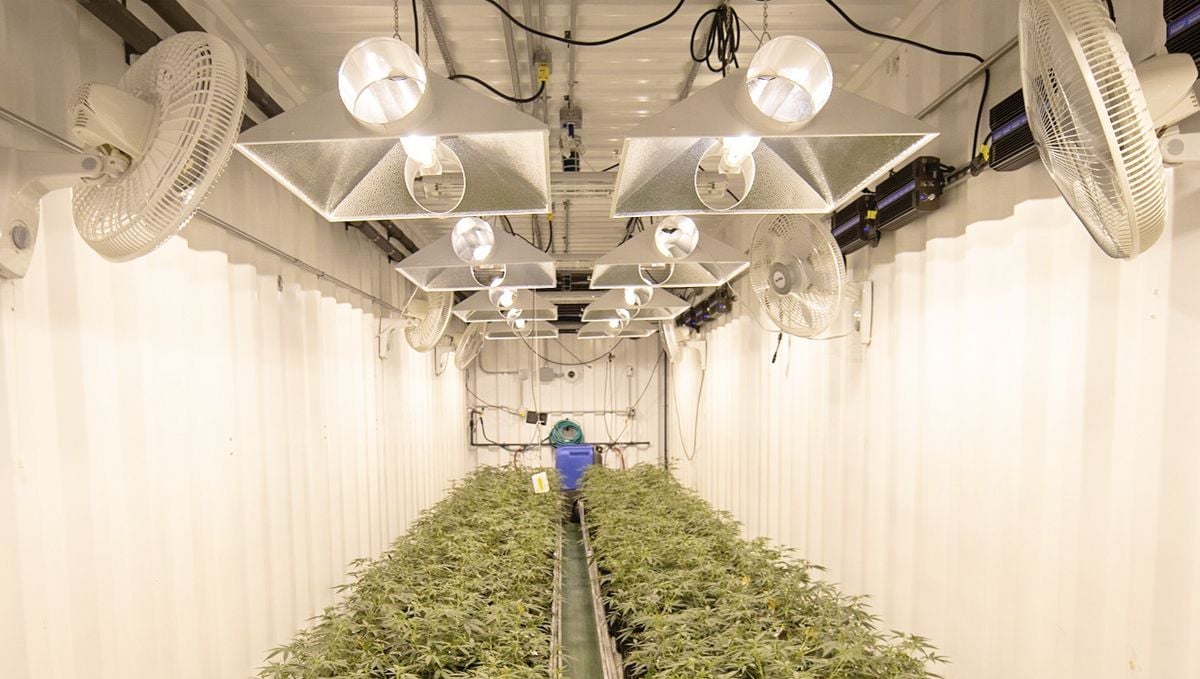
This is only the first step because you’ll also need to keep in mind the bends, altitude ductings length and filter resistance. Also, don’t forget that exhaust fans have to be more powerful than the intake fans. It’s important to maintain negative pressure and to promote an efficient air flow and, of course, odor control for those in more unfriendly places.
Filter and Ducting Considerations
Carbon filters and ducting have an important impact on the airflow so you need to consider them when you create the ventilation system for your room. The filter needs to be the right size and with the appropriate capacity otherwise you’ll risk restricting airflow and affecting the overall ventilation. Don’t forget to replace the filter so it maintains its efficiency on odor control and air flow.
Make sure the ducting is not too long and they’re not bent too sharply because it might reduce air flow as well.
Adjustments for Environmental Factors
If you live in a region with more than one season, then you’ll probably have to adjust the temperatures based on the climatic fluctuations. That’s why it’s important to always check on your plants and adjust the ventilation, temperature and humidity in your grow space.
Ventilation System Installation and Configuration
No matter how fancy the tools and instruments for your ventilation system, the way you set up your space is the most important point of all. So, here are some points you need to take into consideration:
Grow Tent Ventilation Setup
If you’re growing your cannabis plants in a grow tent, then place the exhaust fan at the top, no matter if it’s inside or outsite. This way, you’ll be able to remove the warm and stale air without any issues. Next, if you need odor control, attach the carbon filter to the exhaust fan. Ducting, clamps and zip ties should do the trick.
The intake fan should always be at the bottom of the tent on either side. Thanks to the location on the lower end, you’ll draw fresh, cool air to your plants. After setting up the placement of the fans, add the oscillating fans inside to keep the same temperature and humidity levels. Once you’re all set up, connect the speed controllers, thermostats, hygrostats and also install tracking equipment for temperature and humidity.
Adjusting for Environmental Factors
Some of the adjustments you’ll have to make are to the fan speeds, adding or removing oscillating fans, adjusting temperature and humidity. It’s important to do these checks on your plants on a daily basis to make sure you can make your adjustments on time.
Maintaining Negative Pressure
We’ve mentioned negative pressure above. This promoted the air exchange and odor control through a higher exhausting capacity that draws air faster than it’s replaced. The vacuum effect created stops the odors while keeping the fresh air flowing.
Tips for Optimizing Ventilation
You can optimize the ventilation system and support having better results for better harvests.
Sealing Your Grow Space
By sealing your tent or your grow space you make sure that air doesn’t escape and your air flow remains consistent. There are many tools you can use, but some of the most frequent is foam insulation, weatherstripping or caulk. Seal almost all the openings, but leave one space for the exhaust and intake so the passive air can still happen.
Minimizing Ducting Length and Bends
When using a shorter ducting length you minimize the risk of blocking the air flow. It’s essential to slowly bend the ducting tape so it creates a gradual curve.
Proper Fan and Filter Maintenance
Generally, you always have to check the status of your plants, but remember to take a look at your fans as well because these also need maintenance. So, clean them often and replace any parts that have problems. Don’t forget about the filters and change them either according to your manufacturer’s recommendations or when it’s not as efficient.
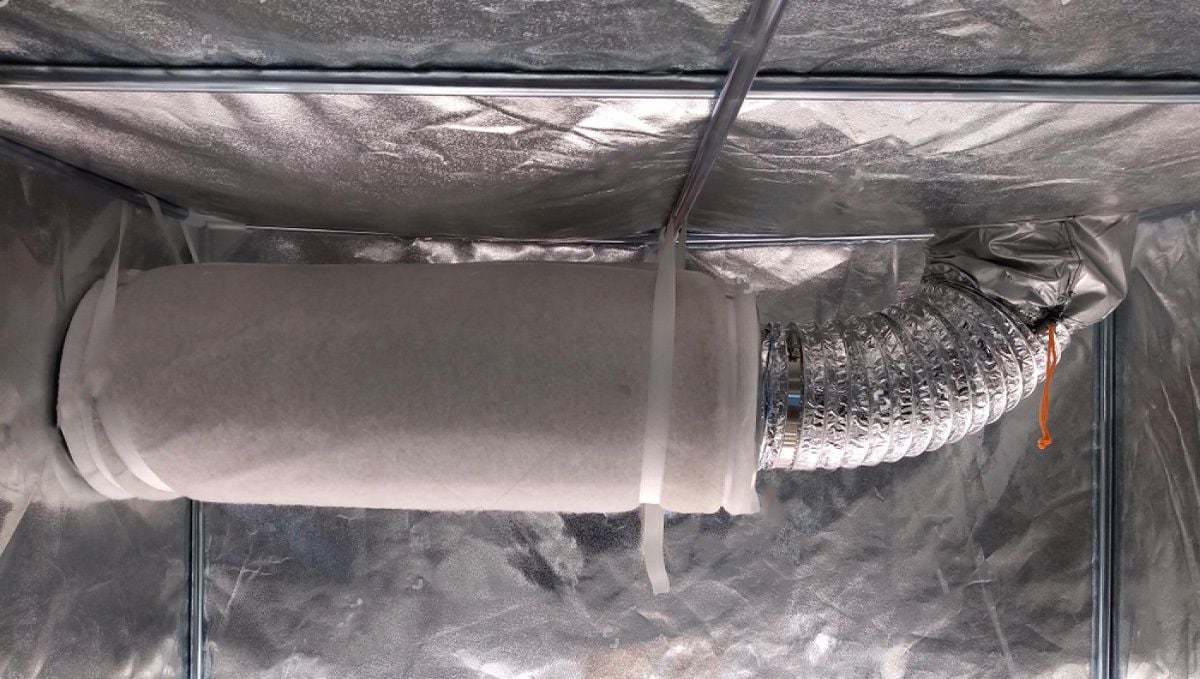
Monitoring and Adjusting Temperature and Humidity
As you might know by now, you have to monitor your plant’s development daily to make sure it receives all the nutrients, light and water necessary. If you want to be on top of your monitoring, then consider buying monitoring tools like thermometers and hygrometers for humidity. These will help you when you have to keep track of all the adjustments you make when temperatures lower or humidity raises.
Common Ventilation Issues and Troubleshooting
No matter the efficiency or the high-end price of your ventilation system, if something’s gonna go wrong, it’s gonna go wrong. So how do you solve the most usual issues with ventilation? Let’s see:
Insufficient Air Exchange
Insufficient Air Exchange usually happens due to sharp bends, long ducting runs, clogged filters and inadequate fan capacity. Let’s see what are the ways you could use to solve this issue:
- Make sure your fan has the right capacity for the size of your growing space.
- Try to keep the length of your ducting as short as possible and don’t create any harsh angles.
- Check the carbon filter frequently and change it when it’s dirty or clogged.
Temperature and Humidity Imbalances
There are multiple factors that can affect temperature and humidity. Most of the time it’s due to a poor system configuration, fan speed set too fast or too slow or just the environment.
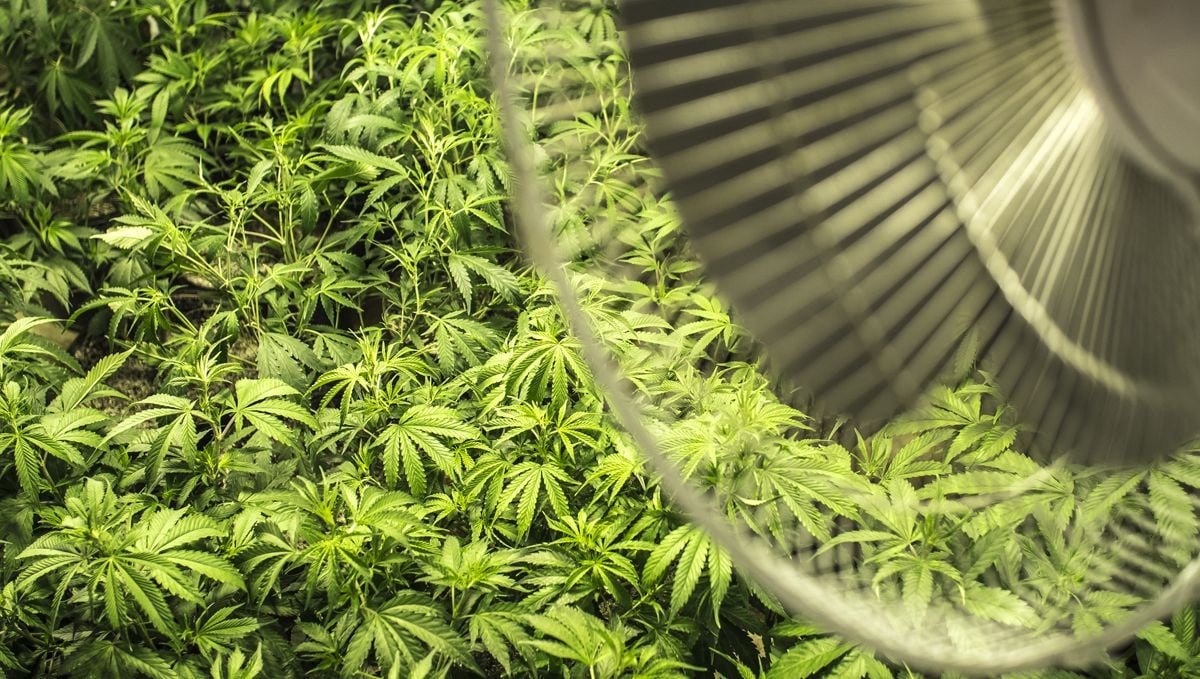
Here’s how you can deal with these issues:
- Check your ventilation system and make sure everything it’s in the right place: exhaust fans at the top, intake fans at the bottom.
- Adapt the speed of the fans based on the temperature and humidity levels in the grow space.
- Keep track of seasonal fluctuations and seasonal changes to make the right changes to your space.
Odors Escaping from Grow Space
If you start smelling your plant from outside your grow room, then you definitely have a problem. Sometimes it’s because of the carbon filter that’s overdue for a change, other times due to the air leaks or the negative pressure.
- To maintain negative pressure, it’s important to keep the intake fan capacity lower than the exhaust fan capacity.
- Change your filter if it’s dirty, clogged or recommended by the manufacturer.
- Make sure there are no gaps and if you find any, then close them up with caulk, foam insulation or weatherstripping.
Additional Ventilation Tips
There’s a lot more things you can do to optimize your ventilation system so you can enhance your cannabis plant’s growth. Let’s check them out:
Using CO2 Supplementation
CO2 has a great effect in boosting cannabis growth and yields. The supplementation is a great help for boosting photosynthesis as long as you balance the amount of CO2 with enough lighting to not suffocate your plants. So keep the PPFD levels at 1.000 - 1.100.
Let’s check out how you can add CO2 supplementation to your grow space:
- You can add more CO2 to your space by using bottled CO2 or a CO2 generator.
- Monitor the CO2 levels in your grow space using a device designed for this and keep it at 1.000 - 1.500 ppm.
- Keep the ventilation on top of its game to allow fresh air to enter the space and to avoid too much CO2 supplementation.
Using Air Purifiers
Air purifiers are useful in any living space, but for your cannabis plants these devices can do a great job at removing any harmful diseases, pests, pollen, mold spores and so much more. Moreover, the overall environment for your cannabis plants will be much more improved. Here’s how to set up an air purifier to make the most of it:
- Make sure you buy an air purifier that has a HEPA filter. These are specifically designed to remove contaminants and all forms of small particles.
- In terms of location, you better put the air purifier close to the intake fan. This way, it’ll filter the passive air.
- Keep track of the status of your air purifies and check the filters to make sure it up to its best performance. Make sure to clean it and to change the filers according to the manufacturer’s recommendations.
Noise Reduction
Many growers struggle with the amount of noise created by the ventilation system, particularly due to the amount of devices it needs to function properly. From fans, ducting and air purifiers, you might disturb some of your neighbors if you live in an apartment complex. So, let’s get you the tools you need to lower the noise all round:
- From the beginning, try and find quiet fans. Shop around before making a decision and try to look for brushless motors or fans created with reduced sounds in mind.
- When setting up the ventilation system, pick insulated ducting to lower the sound transmission.
- Acoustic foam and mass-loaded vinyl are a great choice to lower the overall sounds in your grow room.
These few recommendations and tips should help you create a ventilation system for your tent or grow room that will be both efficient and performant. Do your research and use both industry approved systems, as well as DIY methods to upgrade your system and to make it as good as possible. In the end, all of this effort will be rewarded with healthy plants and high yields.
Maintaining Ventilation Equipment
If you plan on using your grow space to cultivate for a long time, then you need to maintain your devices and equipment to keep it all working at top speed. Take a look at this check list and see how you can keep your ventilation system in pristine shape for longer:
Cleaning Fans
Your fans will trap dust and debris no matter how clean is your grow room so they’ll definitely need some maintenance. Here’s our go to method to cleaning fans:
- Always turn off any devices you’re about to clean, especially the fans.
- With a brush or microfiber cloth, remove all of the dirt from the fan and all of its components.
- If you really have to, then use a detergent and a cloth to clean the components, but make sure to not add any water to the electrical parts of the fan.
Checking and Replacing Filters
Filters are one of the most important components of a fan so you need to pay close attention to when it’s time to clean or replace them. These allow the air to flow to an optimal level as well as controlling the odor of your space.
- Take a good look at your filters and check for any signs of blockages, build up and clogs.
- If your manufacturer recommends replacing the filter, then do so, if not, then clean it thoroughly.
- Carbon filters generally work at optimal levels for about a year to a year and a half. But check it frequently and replace it when necessary.
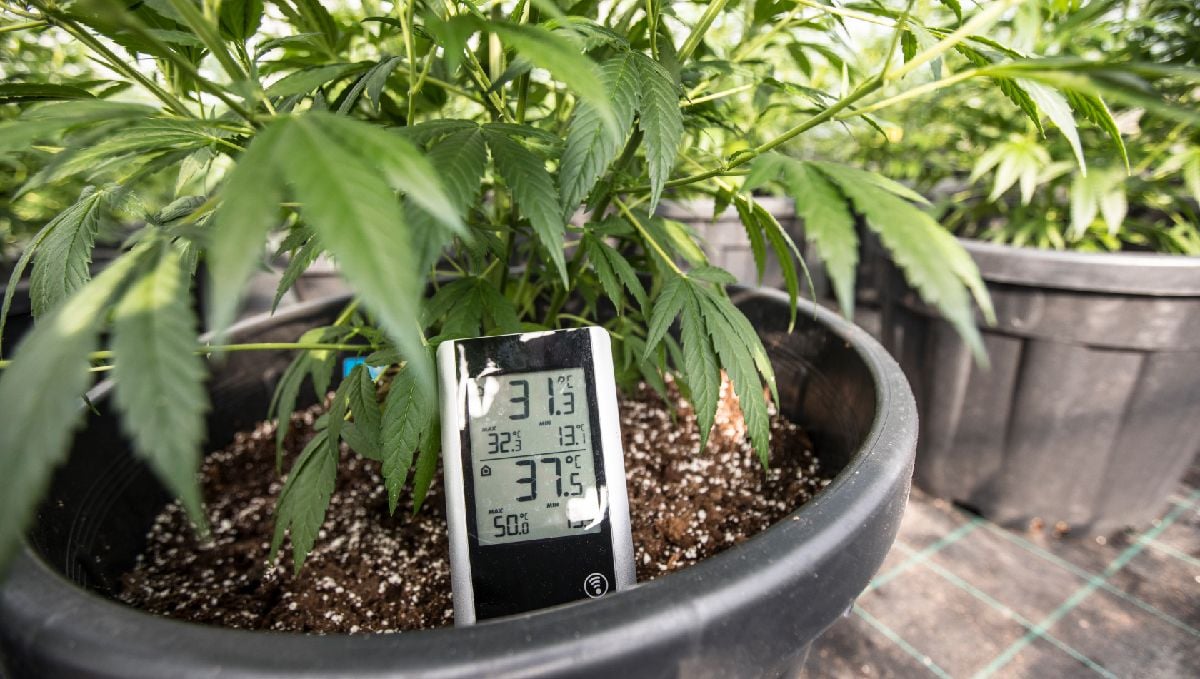
Inspecting Ducting
Ducting can be a pain to fix if it’s damaged. Also, if we’re talking about leaks and obstructions then you’re on the road to get your room smelling strongly and low airflow.
- Before doing anything, start by looking for any signs of leaks, loose connections and tears.
- Fix or change the problematic parts of your ducting.
- Ductings should be short and curved in a way that you won’t have any sharp angles so it doesn’t impact the airflow.
Ductings need to be checked regularly to maintain a good airflow and to make sure your plants have the best environment possible. Fix any leaks or damages as soon as possible, and replace any unfixable part to avoid impacting your cannabis’ growth.
Optimizing Grow Space Layout for Ventilation
The ideal growing environment for a cannabis plant to thrive needs to have good lighting, an optimized ventilation system and even temperature distribution. So let’s see how you can make the most of your grow tent or room.
Plant Spacing
Each cannabis plant needs to have the right amount of airflow throughout all of its surface so it’s important not to stack them too close to prevent any disease or infestations with pests, mold or mildew. Here’s what you can do to make sure your plant has the best conditions possible:
- Based on what’s your expected yields, the number of plants, their growing stage and the size of the pots you can help you determine the spacing between your cannabis.
- Make sure the plants are evenly distanced so air has a place to travel through all the leaves, branches and stems. This way you won’t risk infections.
- Training techniques like SCROG and LST are a great way to keep your plants in the best position possible to allow light and air penetration.
Light Placement
Light is responsible for many of the growing processes of your cannabis plant and also helps with temperature and humidity distribution. That’s why it’s important to know how to optimize your lighting system:
- Energy-efficient bulbs produce less heat so your ventilation doesn’t have to work overtime to maintain the overall temperature in your grow room. Pick LEDs or CMH lights.
- When setting up the lights, make sure you distribute them evenly over your plants and avoid creating hotspots or shade.
- As your plants keep growing through the stages, make sure to change the height between the lights and the canopy.
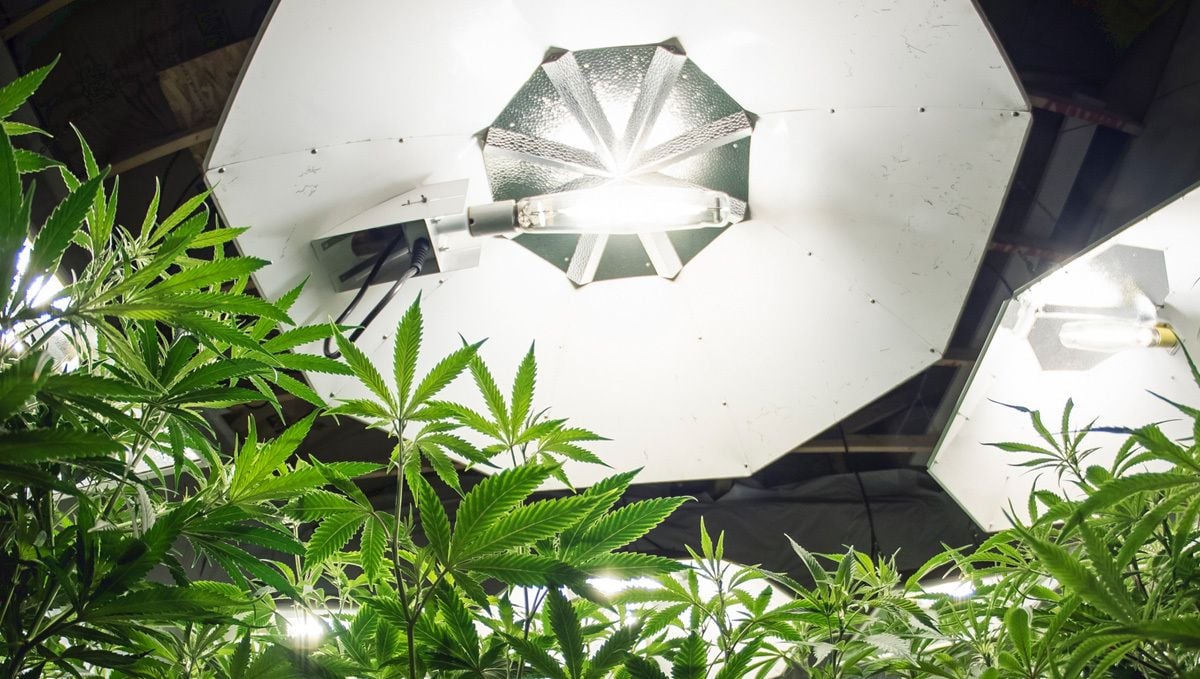
Ventilation Equipment Placement
Your ventilation system needs to be placed in a way that covers all the growing space so that its efficiency is spread evenly.
- Exhaust fans or vents should be at the top of the growing space, diagonally from each other. The intake vent should be at the bottom so the air can circulate evenly without any restrictions.
- To reduce pests and diseases infestations, place oscillating fans above your plants.
- Keep your ducting short and slightly bended so you don’t create any air blockages.
These placements will create an optimal growing space for your cannabis plants where you can ensure proper lighting, good airflow and great control of temperature and humidity levels.
Troubleshooting Ventilation Issues
No matter how much you prepare and optimize your grow tent or room, something might go wrong sometimes. So let’s see what are the most common issues and how you can troubleshoot them so your cannabis plants keep growing in the best space possible:
High Temperature
Sometimes the temperature rises in the growing space and you need to deal with it fast:
- Modify the power settings for the exhaust fans or increase the number of fans so hot air can be removed quicker and more efficiently.
- Switch up your lighting schedule and let the lights work more when it’s cooler, maybe during the night.
- Change up the lightbulbs to more energy-efficient LEDs or CMH due to their higher heating point.
- Set up a cooling system such as an air conditioner to balance the temperatures.
High Humidity
If your humidity increases too much in your growing space, then act quickly because you risk mold or mildew developing on your plants:
- Add more fans or increase the power of your exhaust fan. You need to get the air moving quicker to get rid of the excess moisture.
- Get a dehumidifier.
- Maintain a good distance between your cannabis plants so there’s no humidity buildup.
- Don’t overwater your plants. Keep track of your schedule and adjust it when necessary.

Low Humidity
If the air is too dry in your growing space, then you need to up the humidity.
- Use a humidifier to add some moisture to your growing environment.
- Slow down your exhaust fan or the amount of time it’s working so you don’t remove all of the moisture from your room.
- You can use devices like hygrostats for your growing space which allow you to control the humidity levels to your preferred measurements.
- DIY a humidifying tool by putting some trays with water or a wet towel in your grow space.
Odor Issues
There’s some leak in your grow room and you start slowly sensing the smell. Here’s how to deal with that:
- Check your carbon filter and make sure it’s clean and up to date with its maintenance.
- Ducting is one of the first places where you need to look after leaks and damages. If you find anything, solve it as soon as possible.
- Use an ozone generator or another carbon filter to your ventilation.
- Check if your space is well sealed, if there are leakages, seal them.
Frequently Asked Questions
If you still have questions about a good ventilation room, let’s try and answer them below:
How do I determine the right fan size for my grow space?
You first need to know the volume of your space before getting into the right size for your fans. You’ll get to that point by using the formula L x W x H (length x width x height). Next, you’ll need to know what the best air exchange rate is, which is about 1 to 3 air exchanges in a minute. Then, you’ll have to multiply the volume with the air exchange rate. That’s how you find the best fan capacity in CFM (cubic feet per minute).
Here’s a clear example of how to use the formula:
- Grow space dimension: 10 ft x 10 ft x 8 ft (L x W x H) → 10 x 10 x 8 = 800 cubic feet
- Air exchange rate: 2 air exchanges per minute
- Required fan capacity: 800 (grow space dimension) x 2 (air exchange rate) = 1600 (cubic feet per minute)
Can I vent my grow space directly outside?
Yes, you can definitely vent your grow space directly outside, however, you need to take into consideration the local laws concerning growing your own cannabis and the climate. Don’t forget to use a carbon filter to keep odors at bay.
How often should I replace my carbon filter?
Carbon filters have a lifespan of a year, a year and a half. But it’s best to continuously check on them to make sure they’re still performant. If you see any debris, dust or damage, then clean or replace it completely. Also, if the performance is no longer top notch and you start smelling anything, replace it.
Do I need an intake fan if I have passive air intake?
If you have a passive air intake, then you need to make sure that your exhaust fan is strong enough to maintain the negative pressure. An intake fan is not necessary in the case of a smaller grow space, but it’s best to add one intake fan to keep up.
What is the best way to control temperature and humidity in my grow space?
To control the temperature and humidity levels you’re going to need a few monitoring devices. So invest in thermometers, hygrometers and a good ventilation system and keep track of them so you can quickly see any modification in temperature and humidity.
Conclusion
In the end, a good ventilation system will ensure that your cannabis plant has the best conditions to thrive and to produce the highest yields. As long as you keep track of all the measurements, change the filters on time and do some maintenance work, you’re on track towards the best yields yet.
Don’t be afraid to do some DIY work on your grow space to optimize it for an even better harvest. Follow all the advice above, always look at your measurements for temperature, humidity and odor control, and just enjoy the ride!








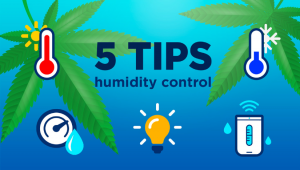
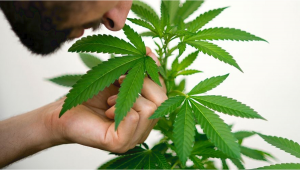




Comments